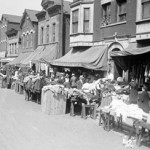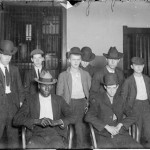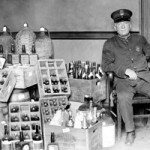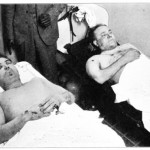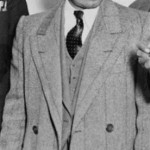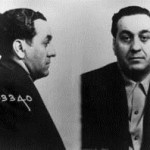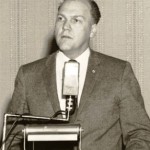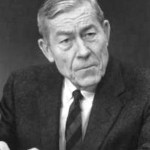The Chicago Mob vs. Chicago Street Gangs
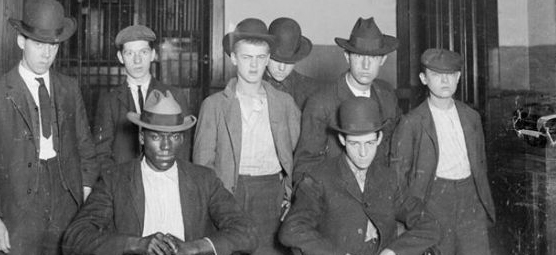
In its nearly 100 years of existence, the Chicago Mob, fabled in a multitude of books, movies and TV shows, has had a storied and violent existence that has gained it enormous wealth and power.
Trading in corruption, vice, dope and murder, the Mob continues to suck the very decency out of our society, seemingly untouched and above the law — and at quick glance shows no signs of weakening. But today the mighty and seemingly all-powerful Mobs of Chicago, New York, New England and other places in the United States are threatened by the massive and powerful street gangs that increasingly haunt our cities.
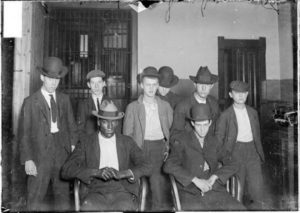
An estimated 70,000 gang members strut through the streets of Chicago today, and their numbers, their might and their presence on the crime scene are growing. One quarter of all the homicides in Chicago are attributable to street gang violence. Nationally, close to 1,000 agencies report growing gang activity, and although not all agencies report on gang-related murders, at least 2,000 gang homicides are reported each year across the country.
In Chicago, street gangs have existed for more than 100 years, first appearing on the scene in the late 1860s. Mostly ethnic European in origin and made up of mostly immigrants, they formed in distinct geographic areas to protect themselves from other groups of immigrant gangs looking to victimize the weak and powerless.
These ethnic gangs eventually became a reliable commodity for political organizations and even plied their fighting skills for warring newspapers at the turn of the twentieth century. Some of the more established gangs, such as the Circus Gang and the 42 Gang, provided talent for growing traditional organized crime groups during Prohibition.
In the early 1960s, the gangs’ demographics changed as did their trade when they moved into the lucrative narcotics business. And then everything changed, as these statistics show:
- Chicago Street gangs/drug activity were responsible for 2,362 murders from 1991 to 2000.
- Chicago Street gangs/drug activity were responsible for 1,879 murders from 2001 to 2010.
Although streets gang demographics have changed, and the vice trade has changed along with it, the Chicago Mob, or Outfit, which often recruited its deadly talent from these very street gangs, remains an elusive traditional organized crime entity. And I want to be clear on this point: The Chicago Outfit is just that, traditional organized crime. It is not the Mafia; it has always been very diverse and operates under the principals of Southern Italian organized crime.
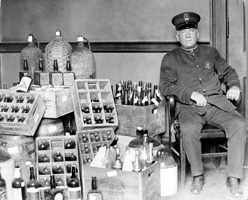
Until the late 1950s it was considered a local problem with little federal intervention. Prohibition turned it into a very profitable and well-run organization but reform movements of the 1920s caused protection agreements to break down, leading to open warfare on the streets of Chicago.
Again, we see that as the Mobs changed on the Chicago landscape, the murder rate changed. The Chicago Mobs were responsible for 594 murders from 1920 to 1929. From 1930 to 1939, the Chicago Mobs were responsible for 325 murders.
To answer the growing threat of organized criminal gangs, in 1931 the Chicago Police Department formed one of the first intelligence and organized crime prevention units in the world under the leadership of Captain William Shoemaker. The unit, known as Scotland Yard, was a super-secret group of crack detectives who operated free of political interference.
The unit was known for its brutal tactics and soon became focused on the traditional organized crime entity, by this time known as the Outfit and run by Frank Nitti. The members of this unit had limited success over the years until 1952 when they were led by Lt. Joe Morris, a tough and able crime fighter.
Morris’s tactics infuriated the Outfit and led to shootings at police stations and brought multiple lawsuits. He had the audacity to appear at crime boss Tony Accardo’s large July 4th party posing as an ice cream vendor until recognized by other Outfit members. He was not opposed to illegal surveillance practices and wiretaps.
The end came in 1956 when the unit was accused of bugging Mayor Richard J. Daley’s campaign office, which happened to be in the same building as various mobsters’ offices. At the time, renowned crime fighter Virgil Peterson, operating director of the Chicago Crime Commission, voiced his outrage over this administrative decision. Under orders of the mayor, the 73 detectives in the unit were scattered into other units throughout the city.
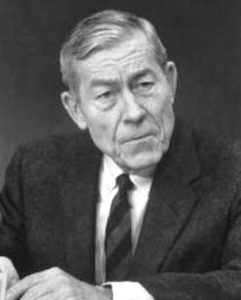
The next efforts at traditional organized crime detection came in 1960 under the leadership of O.W. Wilson. Wilson, a renowned criminologist from the University of California, Berkeley, was brought to Chicago to lead a national search for a new police superintendent and was offered the job by the very committee he chaired. He took over a department scarred by scandal and corruption. Seeing the need to combat traditional organized crime, Wilson created a new Intelligence Unit that by the early 1970s was a division of the police department boasting 150 personnel.
This unit worked hand in hand with Federal Strike Force personnel and together made successful arrests and prosecutions. However, these efforts did not go without criticism and political resistance from the so-called West Block, a group of politicians that represented Outfit interests when it came to legislative and police matters.
Over the years the criticisms did not cease, political pressure always loomed and the department reacted with diminishing resources and little support while known mobsters took city jobs, mostly as no-show employees, and had an abundance of political support, as reflected in the recent indictment of John Bills, a relative to several Mob associates and a City Hall insider.
By 1993, when I entered the Intelligence Unit, there were fewer than 50 people in it, and while each squad of eight to ten individuals had different responsibilities, I was assigned to the Organized Crime Squad. We were the only squad still looking at the Chicago Outfit. By the time I left the unit in 1997 to take the position of chief investigator for the Chicago Crime Commission, there were even fewer. Today, not one member of the Intelligence Unit is actively pursuing the Outfit.
The Organized Crime Strike Forces were created in the late 1960s for the purpose of investigating and prosecuting traditional organized crime as it related to racketeering activities. This effort drew resources from Justice Department lawyers, the FBI, IRS, Postal Service and the Department of Labor. It also received support from other federal and local agencies as needed. Eventually there were 14 strike forces around the country.
The Strike Forces were formed by Congress under the leadership of Senator Robert Kennedy. During their brief time in operation, the strike forces won important convictions of Mob leaders in Boston, Brooklyn, Cleveland, Chicago, Denver, Kansas City, Los Angeles, New Haven, New Orleans, Philadelphia and Rochester. In Chicago, Mob luminary Joey Aiuppa was jailed through the efforts of the Strike Force. It also aided in eradicating corruption from the Teamsters and other major labor unions.
By 2000 the Federal Strike Forces were disbanded by Congress, in favor of state and local efforts to combat traditional organized crime. I find this amusing because by this time major cities were reassigning intelligence personnel to other duties and deferring traditional organized crime cases to the FBI. This pointless circular strategy had been caused by the Bureau’s lack of trust in local law enforcement in matters of traditional organized crime.
Today, the FBI is concentrated almost exclusively on combating global terrorism and has little inclination to go after the Mobs on a local basis. Organized crime squads are underfunded and seldom properly staffed, and all the while the Mobs grow richer and take their deadly toll on our society.
Dr. Wayne Johnson served on the Chicago Police Department from 1973-1997. From 1997 to 2001 he was the chief investigator for the Chicago Crime Commission and later served as police chief for the City of Cicero, Illinois. He is a professor and program coordinator of Law Enforcement Programs at Harper College in Palatine, Illinois. Johnson’s latest book, A History of Violence: An Encyclopedia of 1,400 Chicago Mob Murders 1st Edition, is available on Amazon.com.
Feedback or questions? Email blog@themobmuseum.org






